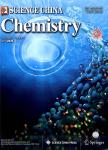High hydrosilylation efficiency of porous silicon SiHx species produced by Pt-assisted chemical etching for biochip fabrication
High hydrosilylation efficiency of porous silicon SiHx species produced by Pt-assisted chemical etching for biochip fabrication作者机构:State Key Laboratory of Coordination ChemistrySchool of Chemistry and Chemical EngineeringNanjing National Laboratory of MicrostructuresNanjing University Jinan Entry-Exit Inspection and Quarantine Bureau Inspection
出 版 物:《Science China Chemistry》 (中国科学(化学英文版))
年 卷 期:2013年第56卷第8期
页 面:1152-1163页
核心收录:
学科分类:080903[工学-微电子学与固体电子学] 0809[工学-电子科学与技术(可授工学、理学学位)] 08[工学] 0703[理学-化学]
基 金:the financial support of the National Basic Research Program of China(2013CB922101) the National Natural Science Foundation of China(20827001,91027019,21021062)
主 题:metal-assisted chemical etching porous silicon surface chemistry hydrosilylation biochip
摘 要:Porous silicon (PSi) prepared from Pt metal-assisted chemical etching (MACE) was demonstrated to possess higher hydrosi- lylation efficiency (-57%) than anodized PSi (-11%) by surface reaction with co-undecenyl alcohol (UO). Deconvolution of the SiHx (x = 1-3) stretching bands revealed the abundance of SiH2 species on MaCE PSi was 53%, -10% higher than on ano- dized samples, while both of Sill1 and Sill3 were -5% lower correspondently on MaCE PSi than on anodized samples. The surface SiHx abundances were suggested to account for the higher hydrosilylation efficiency on MaCE PSi. Optimization of Pt-assisted chemical etching parameters suggested a 7-15 nm thick Pt-coating and an etching time of 3-10 min for biochip ap- plications. Scanning electron microscopy images revealed that an isotropic top meso-porous layer was beneficial for hydrosi- lylation and long-term durability under ambient conditions. To end, an example of histidine-tagged protein immobilization and microarray was illustrated. Combining the materials' property, surface chemistry, and micro-fabrication technology together, we envision that silicon based biochip applications have a prosperous future.



